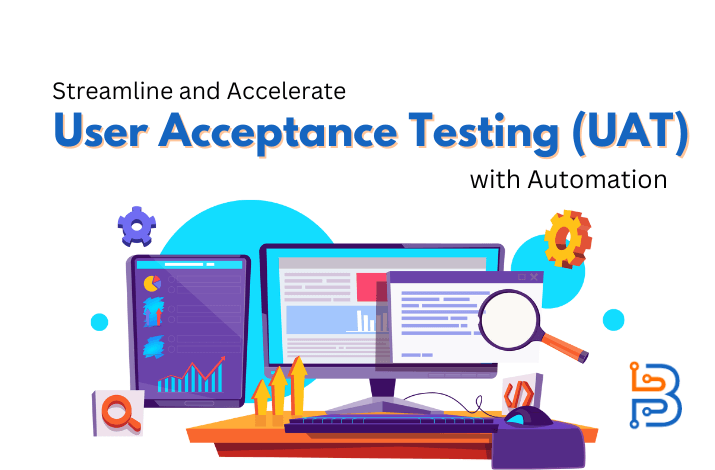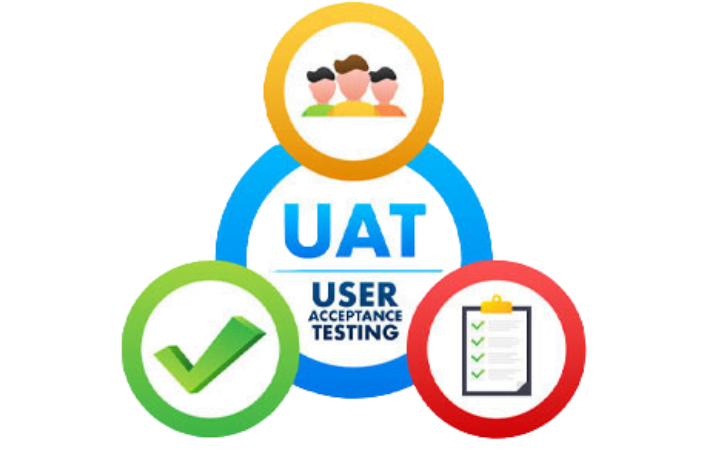Streamline and Accelerate User Acceptance Testing (UAT) with Automation

User Acceptance Testing (UAT) ensures software programs satisfy end users’ expectations and needs. UAT is typically a laborious, manual procedure prone to mistakes and delays. Organizations can now streamline and expedite their UAT efforts thanks to the development of automation solutions like Opkey, which save time, cut costs, and boost overall software quality.
Understanding User Acceptance Testing
Users assess an application’s functionality, usability, and compatibility at the last stage of software development, known as “user acceptance testing,” before making it available in a real-world environment. UAT aids in confirming whether the program operates as anticipated and complies with the stated business requirements. It guarantees that the program is simple to use, devoid of errors, and tailored to the requirements of the end users.
Challenges in Traditional UAT
Manual UAT procedures are frequently time-consuming, labor-intensive, and error-prone. The following difficulties are frequently seen:
Resource-intensive: Traditional UAT demands many businesses users’ time and effort, who are sometimes already overburdened with other duties.
Repetitive tasks: Testers may find themselves running the same test scenarios over and over again, which might make them bored, exhausted, and more likely to make mistakes.
Lack of test coverage: Due to time restrictions, it may be challenging to provide thorough test coverage, which could cause possible problems to be noticed.
Communication breakdowns: It can be difficult to coordinate between development teams, business users, and testers, which can cause delays and misunderstandings.
Limited reusability: Since manual test cases are frequently not reusable, testers must start from begin with each new release or iteration.
Read Also: Software Testing Trends That Are Here to Rule 2023
Streamlining UAT with Automation
By offering a complete platform for test automation and management, automation tools like Opkey overcome the problems with conventional UAT. Here are some ways that automation can quicken and simplify the UAT process:
Test case creation and management: Opkey offers a visual and user-friendly interface for the design, management, and execution of test cases. Reusable test cases are simple to create for testers, which reduces effort duplication and saves time.

Test execution: Thanks to Opkey’s automation features, test cases may run automatically without human interaction. This provides consistency in test execution while considerably speeding up the testing process.
Defect Tracking and Reporting: Opkey offers comprehensive defect tracking and reporting features, allowing testers to detect and record problems quickly. This facilitates quicker defect resolution by streamlining communication between testing and development teams.
Test data management: It is made more accessible by Opkey by letting users create and control test data sets. This makes it possible for testers to cover a variety of test scenarios and guarantee complete test coverage.
Integration with other tools: Opkey interfaces with testing and development tools, like Jira and Selenium, without a hitch, facilitating end-to-end automation and easy teamwork.
Advantages of User Acceptance Testing (UAT) automation
Historically, User Acceptance Testing (UAT) has been conducted through a manual approach, wherein authentic users engage in testing the software. With the continuous progress of technology, the adoption of UAT automation has witnessed a significant surge in popularity. There are several advantages associated with User Acceptance Testing (UAT) automation.
1. Improved Efficiency:
One of the key benefits of User Acceptance Testing (UAT) automation is the significant enhancement in operational efficiency. The process of manual testing can often prove to be a significant investment of time and resources, particularly when confronted with intricate software systems. By implementing automated testing, it is possible to efficiently and precisely execute repetitive tasks, thereby allowing testers to allocate their time towards more crucial aspects of the software. This method not only speeds up development and decreases testing times, but also improves efficiency. Developers will be able to provide better products faster as a result of this.
2. Enhanced Test Coverage:
One of the key advantages of implementing UAT automation is the notable improvement in test coverage. In the realm of manual testing, the task of encompassing all potential scenarios and edge cases can prove to be quite arduous, primarily due to the constraints of time and the inherent limitations of human capabilities. Automated tests possess the capability to swiftly execute an extensive array of test cases, resulting in a thorough examination of user interactions and system functionalities. This ensures a comprehensive coverage that encompasses a wide range of scenarios.
3. Increased Accuracy:
Human error is an intrinsic component of any manual process, including User Acceptance Testing (UAT). Errors made during the testing process can result in inaccurate positive or negative results, leading to setbacks and avoidable additional work. User Acceptance Testing (UAT) automation is a highly effective solution that mitigates the potential risks associated with human error. By executing meticulously defined test scripts with utmost precision, UAT automation ensures accurate and reliable results. Automated tests play a crucial role in enhancing the reliability of the testing process by ensuring consistent and accurate results. Furthermore, the utilization of automation tools facilitates seamless duplication and reutilization of test scripts, thereby reducing the likelihood of neglecting pivotal test scenarios.
4. Cost-Effectiveness:
Although the initial setup costs for UAT automation may be higher, the long-term advantages in terms of cost-effectiveness are unquestionable. The process of manual testing necessitates a substantial commitment of both time and resources. This commitment includes the recruitment of specialized testers and the implementation of comprehensive training programs. On the other hand, automated tests offer the advantage of being able to be executed repeatedly without incurring any additional expenses. In addition, the implementation of automated tests significantly decreases the reliance on human involvement, thereby mitigating the potential for errors and subsequent rework that could result in costly bug resolutions in the future.
Read Also: Best IT Management Software for Your Business in 2023
5. Scalability:
The implementation of UAT automation offers a solution for effectively managing larger projects by providing the necessary scalability. The implementation of automated tests enables seamless repetition across various environments and configurations, ensuring both precision and efficiency without any compromise. The scalability of our testing process guarantees unwavering reliability, regardless of the magnitude or intricacy of the software under development.
In the fast-paced and highly competitive business environment of today, the ability to bring software products to market swiftly, while maintaining a high standard of quality, is of utmost importance. The implementation of UAT automation is crucial in expediting the testing phase, thereby significantly reducing the time-to-market.
Conclusion
Opkey is the best automation tool that makes User Acceptance Testing (UAT) much more efficient. Organizations can streamline and expedite their UAT operations with Opkey, saving time and money. The tool’s visual and user-friendly interface enables users to design, manage, and test cases, providing thorough test coverage. The automatic execution of test cases is made possible by Opkey’s automation features, reducing the need for manual intervention and increasing productivity. Also, it allows business users, testers, and development teams to work together seamlessly, improving communication and reducing delays. Opkey’s robust defect tracking and reporting tools help quickly identify and resolve problems.






